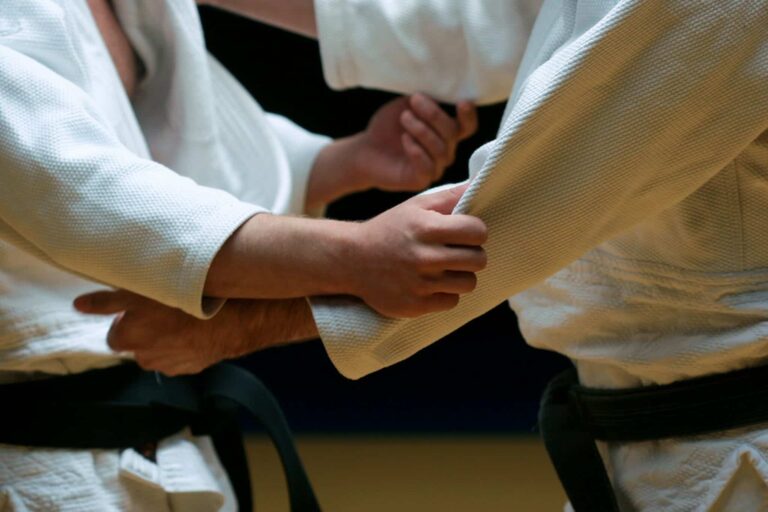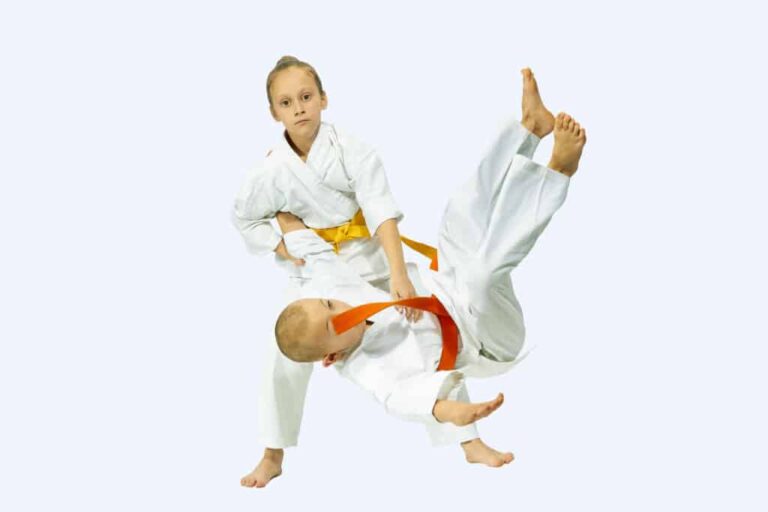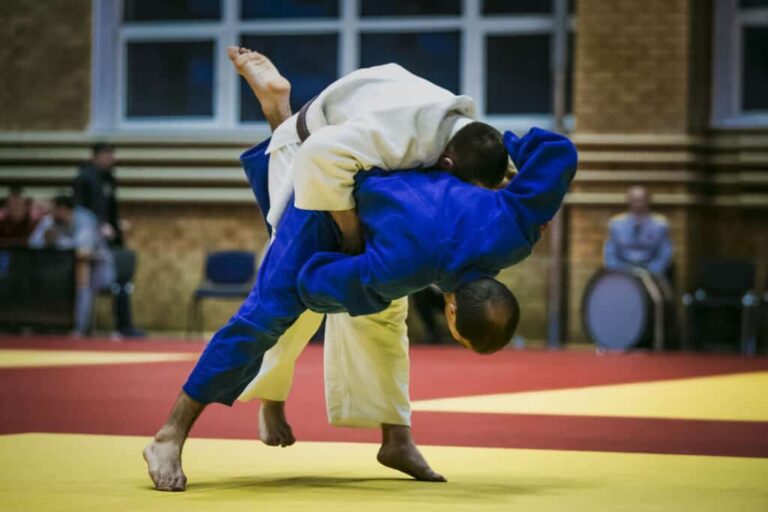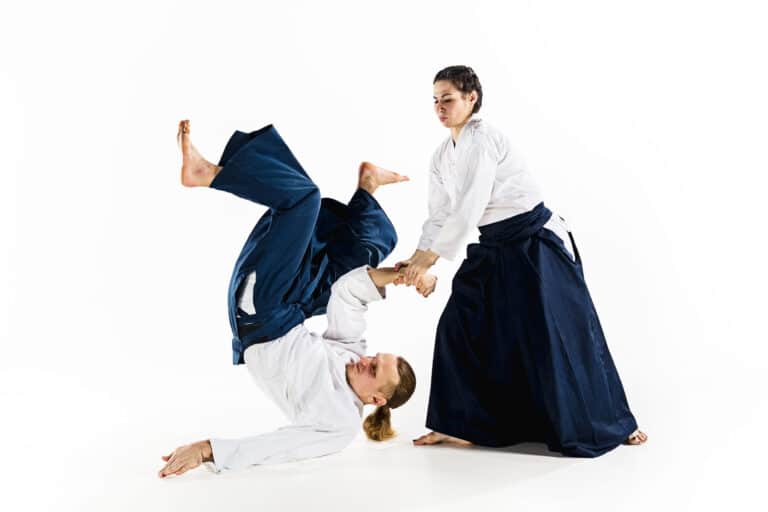Judo Weight Classes and Categorie Guide ( In KG and Pounds )
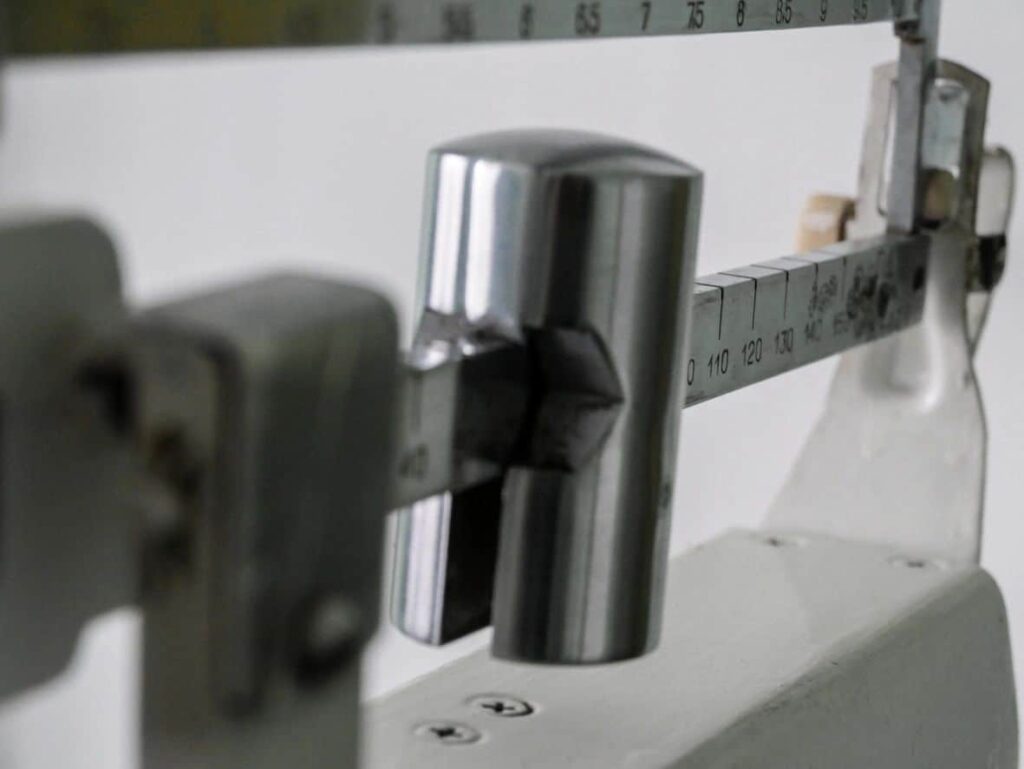
Created in the late 19th century by Jigoro Kano, Judo has evolved from a basic Japanese martial art to a world-renowned Olympic discipline. Similar to most combat sports,
Judo has its rules, regulations, and distinct weight categories that guide the combat process. So what are some of Judo’s weight classes?
There are seven weight categories in Judo for both men and women. There are also two categories for men under 18 and 21. Both of these consist of eight judo weight classes. In addition, there are two junior women’s divisions with eight weight classes.
Judo Weight Classes For Men:
- Extra Lightweight-60 kg (132 lbs)
- Half Lightweight -66kg (145 lbs)
- Lightweight -73 kg (160 lbs)
- Half Middleweight -81kg (178 lbs)
- Half Heavyweight -90 kg (198 lbs)
- Heavyweight-100 kg (220 lbs)
- Open Weight +100 kg ( +220lbs)
Female Judo Weight Classes:
- Extra Lightweight-48 (105 lbs)
- Half Lightweight-52 (114 lbs)
- Lightweight-57 (125 lbs)
- Half Middleweight-63 (138 lbs)
- Half Heavyweight-70 (154 lbs)
- Heavyweight-78 (171 lbs)
- Open Weight+78 (+171 lbs)
Cadet and IJF Junior Judo Weight Classes
Cadet Men Under 18
- Featherweight-50 kg ( 110 lbs )
- Extra Lightweight-55 kg (121 lbs )
- Half Lightweight -60 kg (132 lbs)
- Lightweight -66 kg (145 lbs)
- Half Middleweight -73 kg ( 170 lbs )
- Middleweight -81 kg (178 lbs)
- Half Heavyweight-90 kg ( 198 lbs )
- Heavyweight +90 kg
*Note That the Kg does not convert perfectly into LBS
Junior Men’s Under 21
- Featherweight-55 kg (121 lbs)
- Extra Lightweight-60 kg (132 lbs)
- Half Lightweight -66 kg (145 lbs)
- Lightweight -73 kg ( 170 lbs )
- Half Middleweight -81 kg (178 lbs)
- Middleweight -90 kg ( 198 lbs )
- Half Heavyweight-100 kg ( 220 lbs )
- Heavyweight +100 kg
Cadet Womens
- Featherweight-40 kg ( 88 lbs )
- Extra Lightweight-44 kg ( 97 lbs )
- Half Lightweight -48 kg (105 lbs)
- Lightweight -52 kg ( 114 lbs )
- Half Middleweight-57 kg ( 125 lbs )
- Middleweight -63 kg (138.9 lbs )
- Half Heavyweight-70 kg (154 lbs )
- Heavyweight +70 kg
IJF Womens Junior
- Featherweight-44 kg ( 97 lbs )
- Extra Lightweight-48 kg (105 lbs)
- Half Lightweight -52 kg ( 114 lbs )
- Lightweight -57 kg( 125 lbs )
- Half Middleweight 63 kg (138.9 lbs )
- Middleweight -70 kg (154 lbs )
- Half Heavyweight-78 kg ( 172 lbs )
- Heavyweight +78 kg
In this article, we’ll provide an in-depth guide to Judo, placing extra focus on its weight classes, rules, and scoring system. Ready? Then let’s get straight to the action!
The Evolution of Judo Weight Classes
As one of the most popular Japanese sports, Judo has been subject to several changes since its creation, especially as it gradually evolved into an international, Olympic-recognized sport.
To understand the current weight classes, you’ll want to analyze the evolution of the initial weight divisions since Judo was first included in the Olympics. Here’s a brief discussion of how the current Judo weight classes came to be.
History of Judo Weight Classes
In 1964, Judo made its debut in the Olympic games, featuring 74 participants spread out in five continents and 27 countries. Since Judo’s first inclusion in the Olympic games, its weight categories have been constantly changing, with the Olympics expanding the weight categories during the 1972 Olympics.
There were four different men’s judo weight classes in the 1964 Olympics. The classes included:
- Lightweight– under 63kg (138 lbs)
- Middleweight -under 80kg (176 lbs)
- Heavyweight– under 93 kg (205 lbs)
- Open weight
While there was no Judo in the 1968 Olympic games, the number of men’s weight classes was expanded to six in the 1972 games, with the half-middleweight and half-heavyweight categories introduced.
Judo weight classes were expanded in the 1980 Olympics to eight weight classes after the introduction of extra lightweight and half lightweight categories.
However, the open weight category was dropped in the 1992 Olympics, leaving only seven official and internationally recognized weight classes.
Female Judo Olympic Weight Classes: An Overview
Judo women’s competition wasn’t recognized by the Olympics as a medal sport until 1992. Judo’s (women’s) inaugural Olympics campaign in 1992 followed a successful demonstration in 1988.
And while female weight classes haven’t had significant changes like men’s, they were slightly altered during the 1998 Olympics.
Initially, there were seven female judo weight classes which included:
- Up to 48 kg (105 lbs)
- Up to 52 kg (114 lbs)
- Up to 56 kg (123 lbs)
- Up to 61 kg (134 lbs)
- Up to 66 kg (145 lbs)
- Up to 72 kg (158 lbs)
- Above 72 kg (+158 lbs)
During the 1998 Olympics, Judo weight classes were revised to the following:
- Up to 48 kg (105 lbs)
- Up to 52 kg (114 lbs)
- Up to 57 kg (125 lbs)
- Up to 63 kg (138 lbs)
- Up to 70 kg (154 lbs)
- Up to 78 kg
- Above 78 kg
Since its first inclusion in the 1992 Olympic games, Judo for women has continued to gain popularity, which can be seen from the high number of participants at major tournaments.
Point to note: While there are seven internationally recognized weight divisions in Judo, they can be modified from competition to competition to suit the profile and age of competitors.
How To Choose The Right Weight Class For You
You will want to consider many factors when choosing a weight class. Despite what many people might say, size and strength can give you a big advantage over your opponent. Because of this many people cut weight before a judo competition.
Carrying around an extra 20 to 30 pounds of body fat will put you in a higher weight category with little to no added benefit.
For example, someone who is 17 lbs of pure muscle will likely have an athletic advantage over someone 170 lbs with an extra 30 pounds to lose, but both will compete in the same category.
That said, I would not over-stress about his issue. Just be as lean, muscular, and athletic as you reasonably can and your weight class will figure itself out naturally.
Do the Rules Apply Across All Weight Classes?
Judo rules apply across all weight classes for officially recognized tournaments and competitions. The IJF is tasked with the role of regularly assessing the rules and laws of the sport to suit its growth and improve its entertainment value.
However, it’s important to note that Judo rules can change after major competitions, at least if the IJF determines the need for slight or major modifications.
Wrapping Up
Despite making its Olympic debut in the 20th century, Judo has been around for several years, and it continues to increase in popularity across the world. Both female and male Judo categories have seven weight classes, which allows Judokus to compete in different weight divisions.
Judo weight classes have remained consistent since the 1998 Olympics, with the IJF seeking to make Judo’s rules and regulations a lot clearer for Judokus, officials, and fans as well. However, the weight classes can be altered to suit the profiles of the Judokus, more so in amateur and unofficial events.

